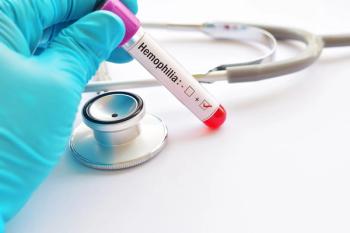
Liberian immigrant girl with difficult breathing and altered mental status
Emergency medical services brings a 9-year-old girl with a cough and trouble breathing to your busy emergency department.
Key Points
THE CASE
Emergency medical services brings a 9-year-old girl with a cough and trouble breathing to your busy emergency department. She is accompanied by her mother, who tells you that her daughter has been coughing since she woke up but was otherwise having a pretty normal day. Her mother thought it was "just a virus" and so did not call her primary physician.
The girl had a mildly decreased appetite for dinner and then went to bed. A few minutes later, she called out, saying that she was having difficulty breathing and her cough was getting worse. She was having so much trouble breathing that her mother called 911. When emergency medical services arrived, she was gasping for breath, desaturating to the low 90s. She was put on 100% oxygen by mask and immediately transported to the emergency department. The medics tell you that she was responsive and oriented to time, place, and person.
She was evaluated at a travel clinic on entry into the United States. Her tuberculosis test, according to her mother, was negative. She has not had any other health problems. There is family history of diabetes mellitus but no history of cancer, seizures, childhood diseases, or any autoimmune diseases.
The girl lives at home with her parents, her 12-year-old sister, and her 6-year-old brother. There are no pets or exposure to secondhand smoke. Her mother says that their apartment was originally painted with lead paint but has since been painted over. They have not noticed any overt paint chipping. According to the mother, there is a significant amount of mold in the apartment.
Physical exam
A physical examination finds a heart rate of 131 beats per minute; respiratory rate of 20; blood pressure, 123/94 mm Hg; pulse oximetry, 89% on room air; and temperature, 36.1°C. She appears somewhat lethargic, almost postictal. She seems to react only to pain. She appears well hydrated, with moist mucous membranes, and has had good urine output throughout the day.
Her head exam is normal, with no signs of any lacerations or trauma to the skull or scalp. Pupils are equal and reactive, although sluggish bilaterally. The child does have full range of motion of the eyes bilaterally but only on command. The ear, nose, and throat exam appears normal. The neck is supple. Lungs are bilaterally clear to auscultation. Breath sounds are reduced on the right compared with the left.
Cardiac exam reveals normal S1 and S2 and no abnormal sounds. The abdomen is soft and nontender, and bowel sounds are present. There is no organomegaly or hernia.
She is Tanner stage 3 for breasts and pubic hair and has normal female genitalia, with no obvious discharge present and no signs of trauma. The child will move extremities only in response to pain. Her skin displays no rash, petechiae, bruising, or laceration. You are unable to test strength and reflexes because of altered mentation.
Emergency department course
The patient is placed in the resuscitation room and hooked up to cardiorespiratory monitors. Two large-bore intravenous lines are started, and blood is obtained for a complete blood count (CBC) with differential, blood cultures, chemistry panel, and venous gas. She is changed to a nonrebreather mask, which initially improved her saturations up to 100%. She is able to lift her eyebrows and look upward, but shortly thereafter she is noted to respond only to pain. At that point, it is decided that she would be intubated with a 6.0 cuffed tube via rapid sequence intubation.
The girl is given a portable chest x-ray. Labs drawn at this time include a liver function test (LFT), C-reactive protein (CRP), serum toxicology screen, urine toxicology panel, urinalysis, and urine culture. She is also sent for a head computed tomography (CT) because of the unsteady gait and mental status change.
Newsletter
Access practical, evidence-based guidance to support better care for our youngest patients. Join our email list for the latest clinical updates.











